Tar Tunnel
The Tar Tunnel, nestled in the historic Ironbridge Gorge, was originally intended to hold a canal for coal transportation in the late 18th century before workers unexpectedly encountered natural bitumen oozing from the walls. This serendipitous discovery transformed the tunnel’s purpose, shifting from coal transit to bitumen extraction. Today, the Tar Tunnel offers guided tours, where visitors can glimpse the preserved remnants of its rich history. The site serves not only as an attraction but also as a symbol of the unforeseen twists in engineering and the adaptability of the industrial age.

Key info
| Address | High St, Coalport, TF8 7HT |
| County | Shropshire |
| Opened | 1786 |
| Commissioned by | William Reynolds |
| Maintained by | Ironbridge Gorge Museum Trust |
Visiting guide
Paid car park at Coalport China Museum
Gift shop at Coalport China Museum
Toilets at Coalport China Museum
What can I expect when visiting the Tar Tunnel?
The Tar Tunnel is open on a limited number of days so booking is essential. The visit starts at the Coalport China Museum.
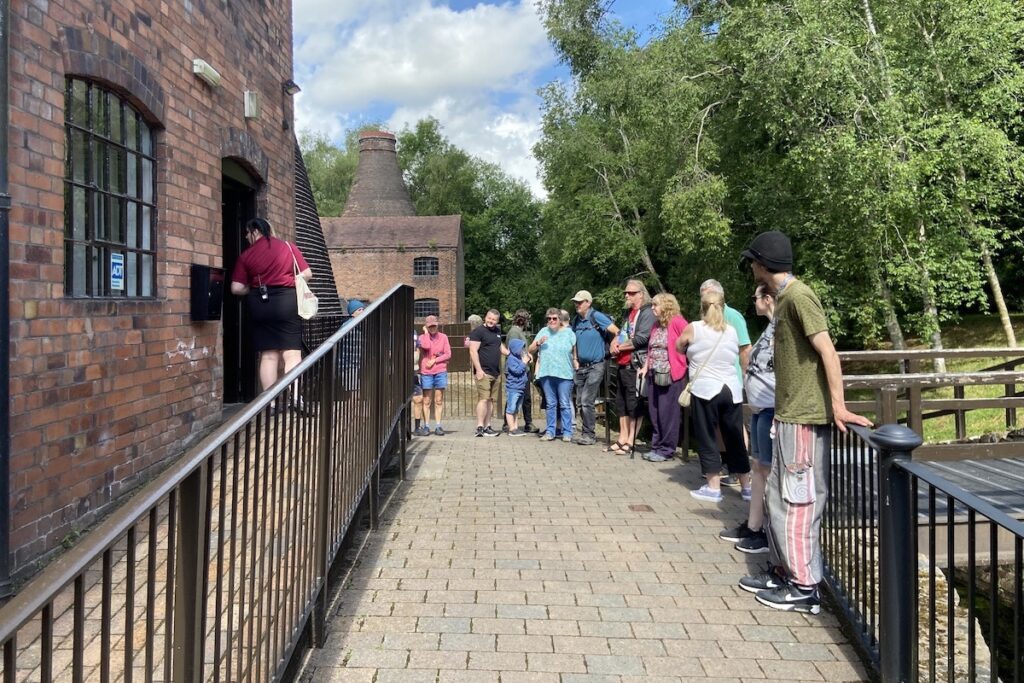
You will be guided along the remains of the Coalport line on the Shropshire Canal pas the bottom of the Hay Inclined Plane.
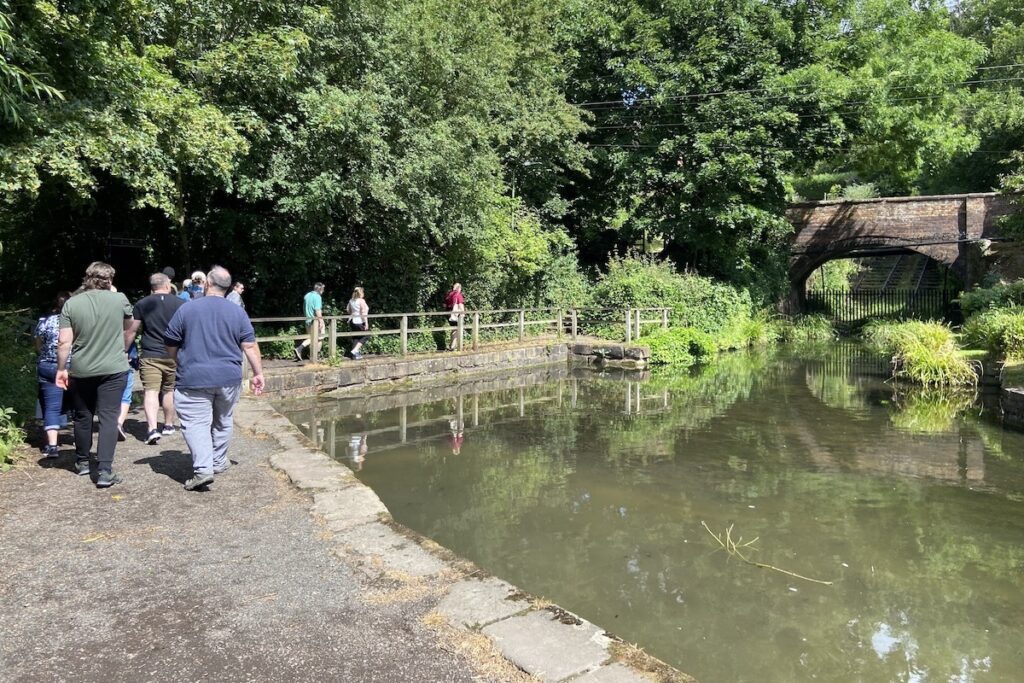
A brief explanation of the tunnel will be delivered outside its entrance before you proceed through its front doors.
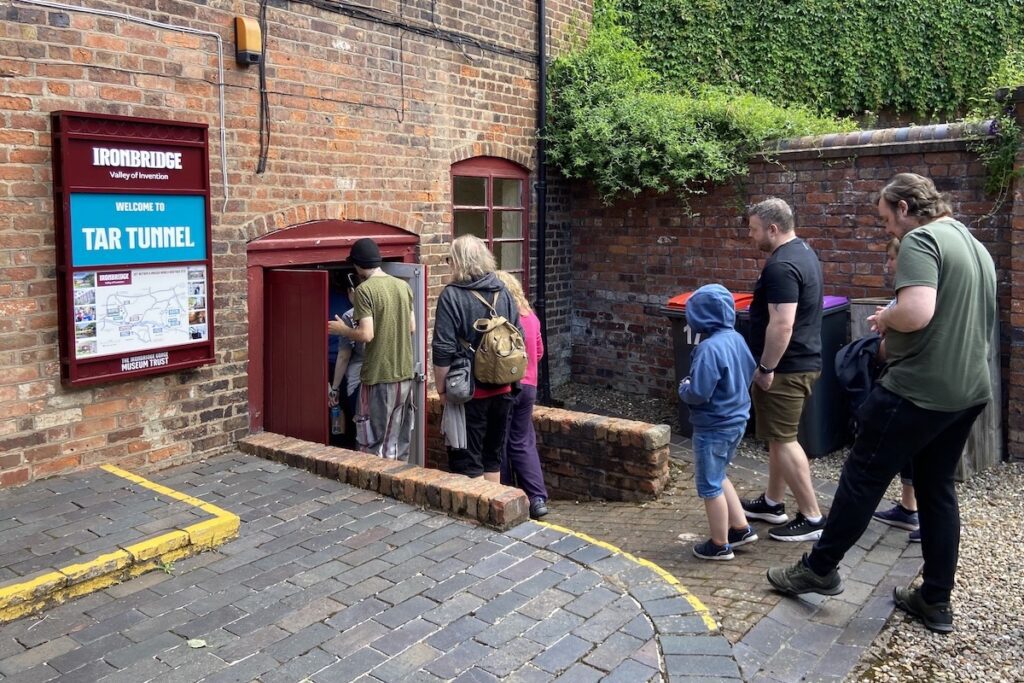
The room you enter was once a general store cellar with the tunnel entrance entirely bricked over. It remained lost for around 30 years before being rediscovered by the Shropshire Mining Club in 1965 after they successfully, and persistently, petitioned the store owner. They carefully removed the shelves in the cellar and some brick work before revealing the arch of the tunnel entrance, which can still be seen today. The tour will then head through the secondary doors into the tunnel.
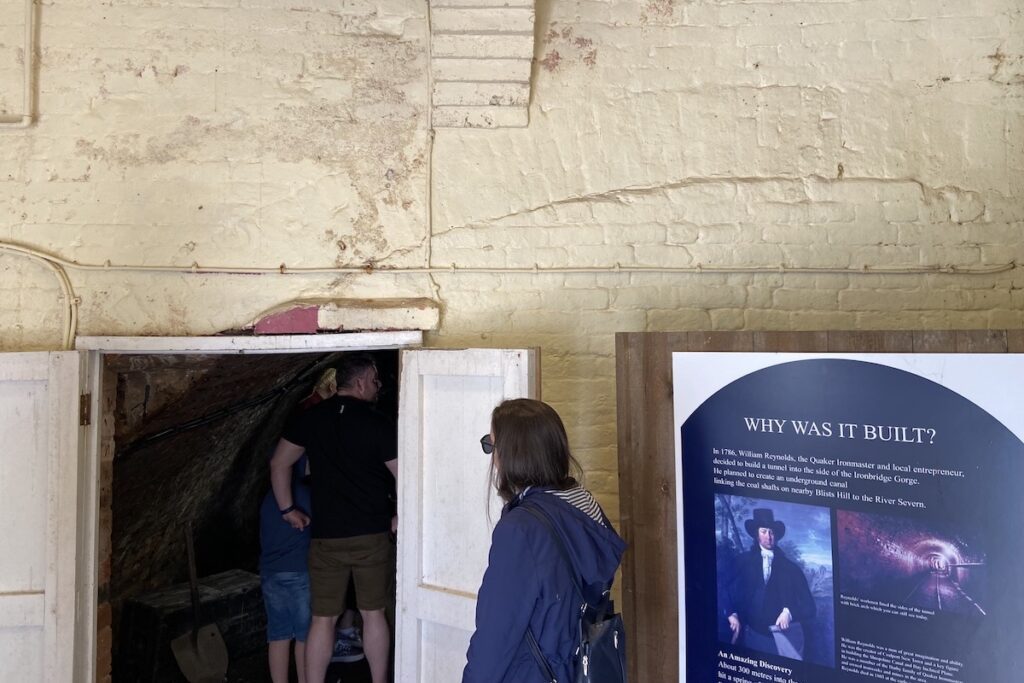
You can only proceed along the tunnel for a short distance before reaching a barrier. In previous years, visitors were allowed to walk up to 100 yards into the tunnel; however, the presence of gas and more stringent health and safety regulations limits the entry of visitors to the barrier you see today. The tour guide will most likely shine a torch down the tunnel, permitting a good view of its murky depths. If you were to proceed further, you would see tar oozing through the mortar joints of the brick lining. Take note of the original tramroad rails used by miners to load wagons.

Some wagons survive at the side of the tunnel, they are probably from the early 20th century.
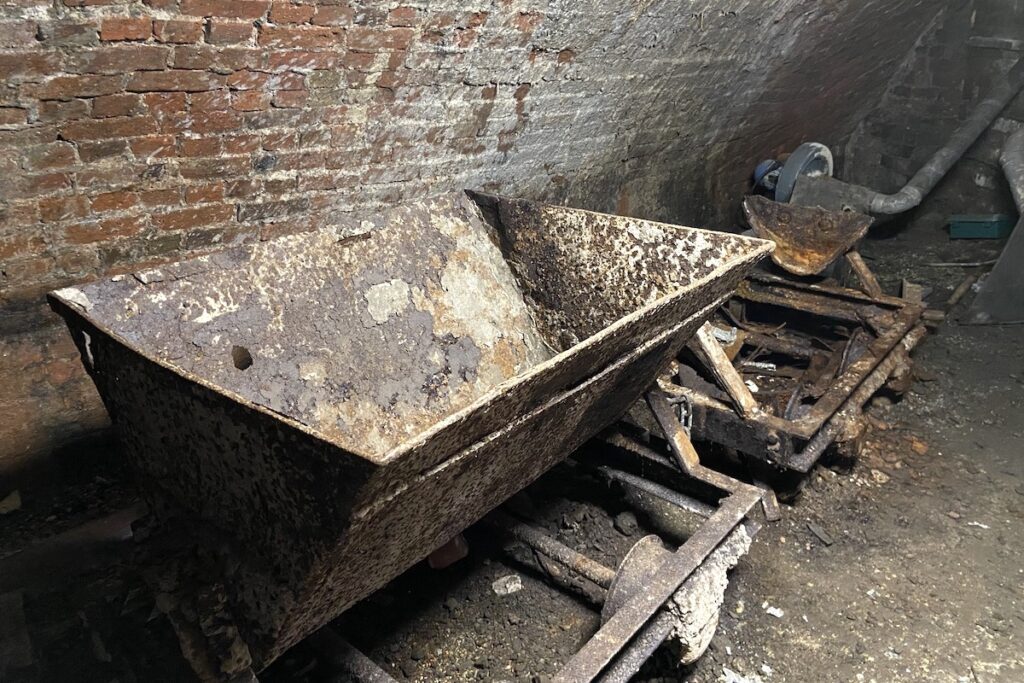
There is other equipment on display highlighting what life was like working in the tunnel.
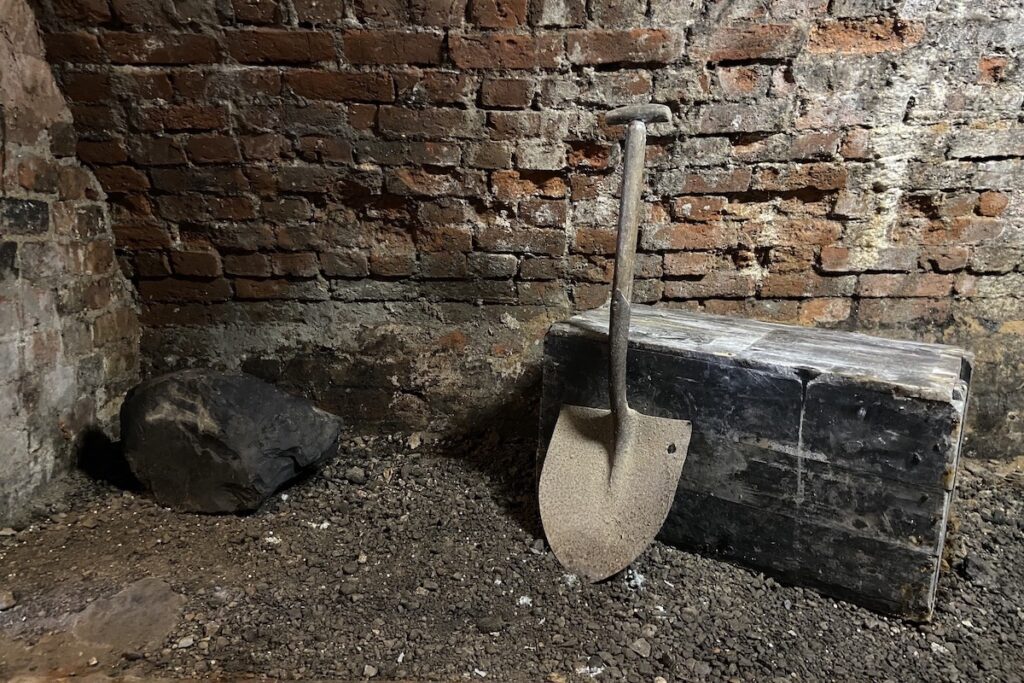
Take the opportunity to ask your tour guide any questions and be sure to peruse the information boards in the tunnel entrance room before exiting the tour.
How long does it take to visit the Tar Tunnel?
A tour of the Tar Tunnel typically lasts about 90 minutes, as the guide provides in-depth explanations about the site’s history and significance.
How do I get to the Tar Tunnel?
Your visit to the Tar Tunnel commences at the Coalport China Museum. Motorists can avail themselves of the museum’s paid parking. Limited bus services are available, with stops approximately a 20-minute walk from the tunnel. For detailed transport information, consult the tunnel’s official website.
History of the Tar Tunnel
1786 – William Reynolds, a local ironmaster started to build a tunnel from a meadow on the banks of the River Severn towards coal mine shafts at Blists Hill to the north. The largely brick-lined tunnel was intended to be used for a canal to transport coal from the mines. The intention was to lower coal down a shaft to boats in the tunnel, which would transport it to the River Severn for transhipment. Workmen dug about 900 ft (275 m) of the tunnel before encountering a sticky black tar oozing from the walls. Reynolds sent of samples of the tar for analysis, which revealed it to be natural bitumen. Like coal and oil, bitumen is the remains of microscopic plants and organisms, which were alive millions of years ago.
Reynolds soon realised the commercial potential of his new bitumen spring and set about plans to convert the tunnel into a site of bitumen extraction. The bitumen was collected in wells and transported out of the tunnel where it was boiled in large cauldrons to be converted into pitch, which was used for the preservation of timber. Unprocessed bitumen was also used for lamp fuel or as a varnish. Some was made into ‘British Oil’, a medicinal treatment of rheumatic and skin conditions. As much as 4,500 gallons of bitumen were collected when the spring was first exploited and over 1,000 gallons a week for several years afterwards.
1790s – Visitors of the tunnel reported it extended about 1,100 yards (1,006 m) as far as the upper shafts of the Blists Hill mines.
1820s – The supply of bitumen had dwindled to about 10 barrels a year.
1840s – Sales of natural bitumen ceased; however, the tunnel continued to be used by miners accessing the coal mines at Blists Hill.
1847 – A house was built over the entrance of the Tar Tunnel, which became accessible through its cellar.
1930s – Use of the tunnel by coal miners ceased.
1940s – The tunnel was used as an air raid shelter during World War II. The entrance was bricked up after the war.
1965 – After being lost for roughly 20 years, the tunnel was rediscovered by the Shropshire Mining Club. The entrance was discovered in the cellar of a general store after the club persistently petitioned the store owner for permission to remove brickwork and shelving.
1968 – The Ironbridge Gorge Museum Trust is established and eventually takes ownership of the Tar Tunnel.
1977 – Members of the local Heritage Education Group and Shropshire Mining Club hold a dinner party in the tunnel. The event is definitely one of eccentricity, especially when you learn the dinner party used open flame candles!
Dimensions & features
How long is the Tar Tunnel?
The Tar Tunnel measures 988 yards (904 m) in total length, which is less than 1,100 yards (1,006 m), the distance reported by visitors in the 1790s.
What features does the Tar Tunnel contain?
There is a locked iron gate 100 yards (92 m) into the tunnel. Beyond the iron gate, about 270 yards (247 m) from the entrance, the tunnel opens out to twice its normal width to allow trains of wagons travelling in opposite directions to pass. After this is a section where the roof has fallen, followed by an unlined section of brilliantly coloured rock. The tunnel then becomes no more than a culvert with an open drainage channel. At 395 yards (361 m) there is a blocked side passage that probably led to the lower shafts of the coal mines at Blists Hill. The main tunnel becomes increasingly narrow and after 736 yards (673 m) no further progress is possible; however, if the tunnel continued in a straight line, it would reach the shafts of the Blists Hill upper pit measuring 988 yards (904 m) in total length. It is likely the tunnel may have continued further.
Sources
Historical content sourced from museum information boards.

 Stanford Bridge
Stanford Bridge